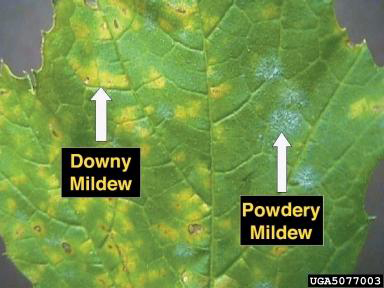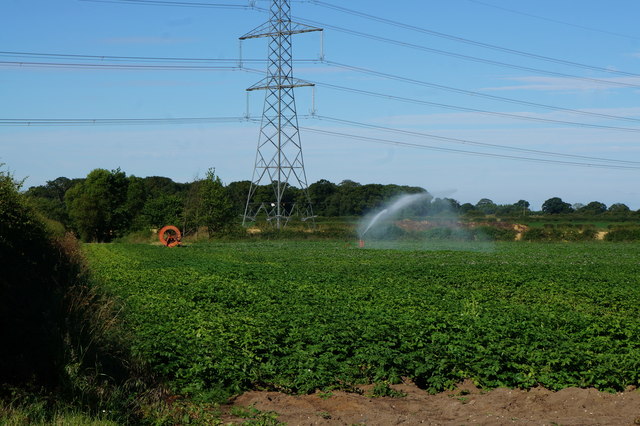How to Control and Treat Powdery Mildew on Plants
With high hopes, you planted seeds in your garden or field, expecting to see delicious fruits and veggies in the next harvest.
But nature had other plans. Instead, you start seeing white spots covering your plants.
Initially, what you thought was a small problem that would “go away”, turns out to be severe powdery mildew that not only slows down the entire growth process but also takes away the naturally sweet taste from your fruit and veggies.
This is a very common problem, and in lack of the right information, we fail to effectively treat the situation correctly. If you’re an organic farmer, gardener or related professional, it’s important that you know everything about powdery mildew—what it is, how to identify it, and then how to control, prevent and treat it.
What is powdery mildew?
It is a fungal disease that’s caused by different varieties of fungi. Depending on its own unique type, the species attack different varieties of plants; such as soybeans are affected by microsphaera diffusa, grapes are affected by erysiphe necator, and apples are affected by podosphaera leucotricha. One of its biggest distinction is that it doesn’t require moisture to affect plants, as is generally the case with fungus. It can breed in nearly every kind of weather condition. However, you would see most of them during the warm and dry season when there’s high humidity.
Identifying powdery mildew
- The leaves have white, flour-like surface forming over them.
- There are small, circular, white patchy surfaces visible on leaves, stems, and even on vegetables or fruits.
- The white patches are consistently growing in dimension and number.
- Powdery mildew affects the upper part of old leaves first and the most. So, look at the condition of old leaves.
- The leaves affected dries quickly, twist and break easily.
Effects of powdery mildew on plants
Powdery Mildew has a variety of effects on plants. To the least, it extracts plants’ rich nutrients, limiting their growth and making them weaker. They show signs of a reduced rate of photosynthesis, along with the amount of sunlight that is conserved in the process of providing energy. It can turn them dry, yellow and withered, leaving fruits and vegetables vulnerable to sunburn. This, if left unchecked, can eventually slow down the producing capacity of plants, and even ridding them of their flavor.
Prevention, Control, and Treatment of Powdery Mildew
Prevention:
An ounce of prevention is worth a pound of cure.
So, it’s a good idea to not let powdery mildew become a problem in the first place. There are 3 steps to prevent the disease—identification, understanding, and action.
The plants, if favored well with the surroundings and climate, show early signs; like crumbling and dried leaves. Generally put, here are 2 simple ways to prevent powdery mildew:
- The first step, of course, is investing in good quality fungicides.
Spraying the right fungicides can play a crucial role in ensuring a blooming harvest season. If the problem is widespread, affecting the whole of the plant, it is best to invest in a good fungicide.
- Water the soil and not the plants. Yes, as simple as this step may sound, it’s quite surprising that many people take overheard watering as secondary. And needless to say, these are also those who have their garden destroyed due to powdery mildew, and their reluctance towards this fungal disease.
Control:
Even with all the precautionary measures, chances are you will see some powdery residue on your plants. What do you do then? Manage the environmental conditions. Of course, this sounds easier said than done. Moreover for those who irrigate on large farms. But this is an ideal option for the likes of gardeners; they can regulate temperate, humidity and leaf wetness duration to make the overall condition unfavorable for this disease.
For those who can’t really control the environmental condition, a basic step is to get rid of the affected part of the plant immediately. This will control the growth of this fungal disease. Admittedly, depending on its extent, this could be quite a tasking activity. But once you have successfully got rid of the powdery mildew, you could actually save yourself from a big loss and possibly bigger stress.
Treatment:
The simplest thing you can do is manually clean off the white spots from the leaves. When you rub two leaves against each other, the powdery mildew would get partially removed. Carefully, continue doing this and you can clean them off fully.
In case, there are too many white patches on leaves, branch and fruits/vegetables – making virtually impossible to clean off manually – the best thing to do is to remove the entire affected part of the plant. Also, if the disease is at its early stage and the leaves have not withered, even watering the plant can be of moderate help.
Once you clean the disease whether by manually rubbing it off or getting rid of the infected part, do not compost any of it. The disease spreads by wind, meaning surrounding area plants are also subject to a higher chance of contamination. The right solution is to burn the debris if your municipality allows backyard fires. If not, be careful in treating the debris according to your local plant disposal regulations.
Again, remember, both preventive and control measures can help only when powdery mildew is spreading or is at the initial stage. In case, if the condition has escalated to a higher severity and the DIY steps are to no avail, the most suited alternative is using a fungicide.
What makes a good fungicide?
There are many fungicides on the market that as just as good for treatment as for prevention. It’s important to pick the right one that can adequately fit your needs and budget. Check the label to be sure they are safe and effective on the type of plant that is infected. For continuous protection, most fungicides will need repeat applications every 7 to 14 days. Always follow the label instructions for both application and waiting period before harvest.
Powdery mildew is a common fungal disease plaguing the gardens and crops of both farmers and home gardeners alike, and can cost you your harvest if you lack the basic knowledge on how to prevent, control and treat it.
SurVerda Labs is recognized for its innovative products, providing the right solutions that incorporate Plant Wash – a natural disinfectant technology that has the surfactant capability – an enhancer for Fertilizers, Fungicides, Pesticides & Herbicides. Don’t let this disease sweep away all your hard work and spoil your harvest. Take the necessary action starting today.
For more information and assistance, get in touch with a SurVerda team member. Click here to contact us.



